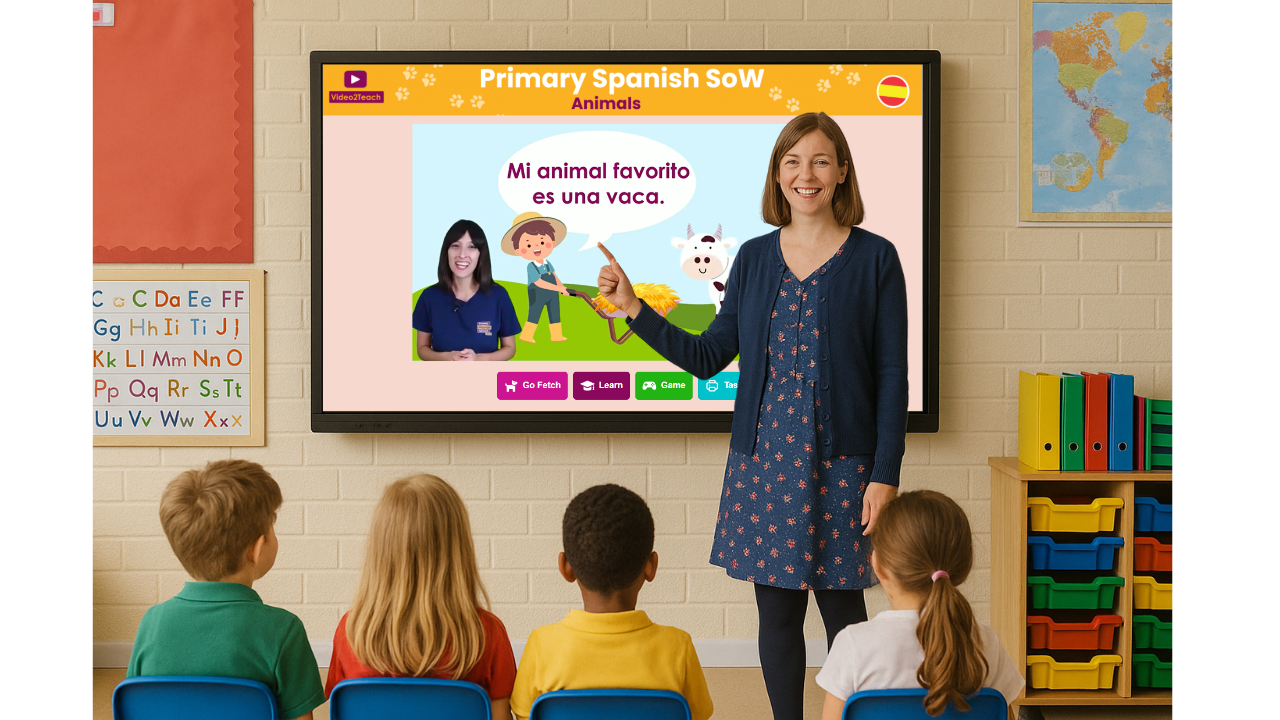Growing Stronger: How Video2Teach Is Empowering Non-Specialist Teachers
In the past year, Video2Teach has continued to see remarkable growth among non-specialist (i.e. non-language specialist) primary teachers—and the data tells a very positive story. Usage is climbing, confidence is rising, and schools are increasingly treating foreign language lessons not as a burden, but as a domain where every classroom teacher can shine.
Usage & engagement: the numbers speak
Total lessons delivered via Video2Teach have increased by 45 % per week compared to this time last year.
Total view time has risen by 30 % over the same period.
We now support approximately 15,000 lessons per month for non-specialist teachers alone.
These are not small jumps. They show that schools are leaning more and more on Video2Teach as a trusted partner in language teaching.
Interestingly, though usage (number of lessons) has grown faster than view time, the ratio suggests something important: many teachers who return to using Video2Teach are no longer relying on full video lessons every time. Instead, they draw on them selectively—precisely when they need the linguistic boost. Over time, as their confidence in leading vocabulary, grammar, phonics, and language activities grows, they are adopting a hybrid style: use the video where it adds value, and lead parts themselves when comfortable.
Teachers use the video, alongside all the teachign resources provided
In other words: Video2Teach is doing what we intended — not replacing the teacher, but teaching with them, scaffolding the language input while allowing the classroom teacher to lead.
How it works in practice
Each Video2Teach video is around 5 minutes in length, embedded within a 45-minute lesson structure. This design ensures that the virtual native-speaker teacher (e.g. Emilie, Irene) handles the key linguistic modeling—pronunciation, key vocabulary, phonics, grammar scaffolding—while the classroom teacher manages transitions, extension tasks, reinforcement, differentiation, and active student engagement.
Over time, this structure helps non-specialist teachers lean into their strengths—classroom management, pedagogy, differentiating, linking to cross-curricular content—while being held by the “handrail” of the virtual teacher for the language component.
As one teacher puts it:
“I’m not a language specialist, but this scheme makes it feel like I am. Everything’s clearly laid out, and the virtual teacher does the heavy lifting.”
Primary Languages Network+1
Another piece of feedback highlights how the video + in-class structure builds confidence:
“This is a wonderful scheme and is highly supportive for non-specialists.”
Primary Languages Network
In schools where Video2Teach is adopted whole-school, one CPD session is often all that’s needed. As one Headteacher observed:
“The CPD combined with Video2Teach has been transformational for our school. Staff now feel confident delivering languages, and we finally have clear evidence of progression across the key stages.”
Primary Languages Network
Interpreting the slower growth in view time
Because view time has grown, but more modestly than the number of lessons, it suggests that returning teachers are leaner in their usage: using only the video segments (or parts) they need. That shift is a strength, not a weakness. It means:
The schemes in French and Spanish include thousands of chances for games, songs, stories and fun!
Teachers are internalising the structure, pacing, and language sequencing.
The video scaffold is being used on demand—when teachers feel they need extra support.
Teachers are increasingly confident to “step in” mid-lesson, pause the video, extend, and adapt.
That kind of blended, evolving use is exactly what we hoped for from the start: Video2Teach isn’t a crutch you permanently lean on—it’s a springboard to independent, confident language teaching.
Why the growth is happening
Several key features help drive this success:
Team-teaching model – The classroom teacher and virtual specialist teach in tandem rather than the video simply “taking over.”
Native speaker modeling – Pupils hear accurate pronunciation, intonation, rhythm, phonics, helping both pupils and teachers to mirror authentic speech.
Supportive CPD and upskilling built in – Many schools require only one whole-staff CPD to get everyone up and running.
Scaffolded, structured lesson design – The consistent 5-minute video + 45-minute lesson setup gives teachers a reliable “frame” to build on.
Flexibility in use – Teachers can use the full video, segments, or no video in later lessons as confidence grows.
School-wide consistency – Because all teachers use the same system, consistency of quality is maintained across classes and year groups.
As the Video2Teach product page reinforces:
“Your teachers will no longer require CPD & continued training for primary languages. Video2Teach 2.0 is a team teaching tool for the classroom teacher.”
Primary Languages Network
And as another testimonial notes:
“The new Video2Teach has received very positive feedback from teachers in our school. It has encouraged teachers to be more creative with their lessons.”
Primary Languages Network
Summary & forward look
Video2Teach continues to grow in reach, trust, and impact among non-specialist teachers. The uptick of 45 % more lessons weekly, and 30 % growth in view time, confirms that more schools are integrating it into their foreign language provision. With 15,000 lessons supported each month, it’s become a backbone for many primary schools’ language curriculum.
But the even more powerful story lies in how teachers are using it: increasingly selectively, flexibly, and confidently. The transition from full reliance to targeted usage is evidence of teacher growth, not fading engagement.
By offering a scaffolded, structured, native-speaker led video component within a full lesson framework, Video2Teach enables classroom teachers to lead, adapt, and build ownership—while never being left to “do language” entirely on their own.
Why not find out for yourselves why this revolutionary approach to primary languages is being used more & more in schools across the UK & Ireland



